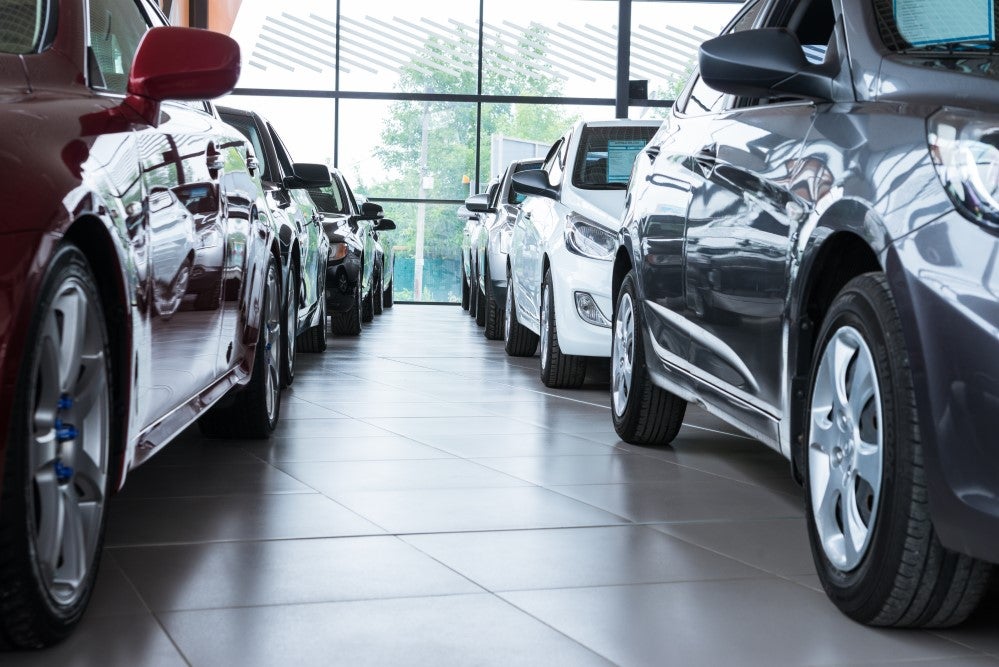The past 18 months have indisputably presented big challenges for dealers – and if the struggle of navigating the post-pandemic world wasn’t enough already, the global manufacturing issues that have followed have had, and continue to have, a serious knock-on effect on the industry. Seán Kemple, managing director of Close Brothers Motor Finance, writes
The global shortage of computer chips used in car production, as well as other materials such as copper, aluminium and cobalt, has led to fewer new vehicles rolling off production lines, which has severely limited dealers in their recovery after forecourt closures due to the pandemic. In fact, research conducted by Close Brothers Motor Finance showed that dealers think that supply chain issues impacting car prices will be one of the biggest threats to their business over the next 12 months. Furthermore, some new car dealers identified the growing used car market as a threat to their business; likely having struggled with the challenges of having to source used car stock they previously haven’t had to turn to.
An overwhelming 94% of UK dealers agree that the manufacturing delays and the shortage of semiconductors have caused the price of stock to increase. The main domino effect of the consequently increased waiting times and rocketing prices of new cars has been that the used car market has exploded, with four in five (80%) dealers citing that they have seen more people buying used cars.
Consumer demand has soared: in a post-pandemic world, well over a third (37%) of UK adults say their preferred method of travelling to work is by car, compared to just one in ten (12%) who favour public transport and the same number (12%) who would rather walk. Just 4% choose to cycle to their place of employment.
But choice is stifled. Dealers are struggling to stock their forecourts due to manufacturing shortages; there simply is not enough stock to meet demand. This has led buyers to turn to ‘nearly new’ options, a growing trend where vehicles up to 12 months old are outstripping the price of their new counterparts – rising by 50% or more in some instances. According to recent data from AA, the steepest increase was the price of a three-year-old Mini Hatch, which in 2021 was 57% higher (£15,367) than a model of the same age in 2019 (£9,811).
This scale of increase in the prices of used cars is something we’ve never seen before in the car market and may never see again. The trend is so significant to cost of living data in general that it has been regularly highlighted by the official collector of the numbers, the Office for National Statistics.
How well do you really know your competitors?
Access the most comprehensive Company Profiles on the market, powered by GlobalData. Save hours of research. Gain competitive edge.

Thank you!
Your download email will arrive shortly
Not ready to buy yet? Download a free sample
We are confident about the unique quality of our Company Profiles. However, we want you to make the most beneficial decision for your business, so we offer a free sample that you can download by submitting the below form
By GlobalDataRealistically, it could be March next year before we see any significant recovery. With supply chain pressures unlikely to ease up this side of Christmas and second-hand vehicles going for premium prices, customers looking for a car are left in an unenviable position. Dealers may recognise this sentiment, but largely have their hands tied due to manufacturing timings being completely out of their control. The best thing that dealers can look to do going forward is stocking their forecourts in the most efficient way possible, using data and digital tools to their advantage in this ever-evolving industry.
For example, we recently partnered with Auto-Trader, launching a data tool that will give dealers insight into consumer demand in the marketplace; something that is invaluable in the present turbulent and challenging industry. Working smarter, not harder will no doubt be the way forward for dealers if they are to keep up with a market that is developing in highly volatile and unpredictable ways. At a time of rapid change and increased uncertainty, it’s never been more important to understand true consumer demand and being able to price accordingly. Utilising data to access information that will allow them to quickly adapt their stocking and pricing strategies to better reflect market conditions may give them the edge they need.
Ultimately, the needs of consumers will continue to change, as the unexpected explosion of demand for used cars has clearly shown us. Consequently, it’s important that dealers continue to monitor the trends shaping the industry and directly impacting their forecourts, so that they are supporting consumers in their buying journey.
As we look toward the future, particularly to the growing popularity of electric cars, the demand for used car sales may return to normal levels. But these challenging times may serve as a reminder that it is necessary to continue to update the way dealers work; a key component of this is to manage forecourts efficiently in order to maximise profitability. Using data to understand consumer demand and price expectations, staying up to date with emerging trends and consumer buying habits and making informed decisions around managing forecourts will be the key components to staying ahead of the game, and will lend the necessary edge when it comes to managing competition and circumstances outside of their control.
However, the responsibility lies with the government to do what they can to support dealerships. While the halving of business rates announced in the Chancellor’s recent budget may take a little of the pressure off, we need policymakers to drive change which will help to put the air back into the tyres of the motor industry. Now, a full recovery, as opposed to treading water, is what both government and industry need to be working together to achieve.







Related Company Profiles
AA PLC